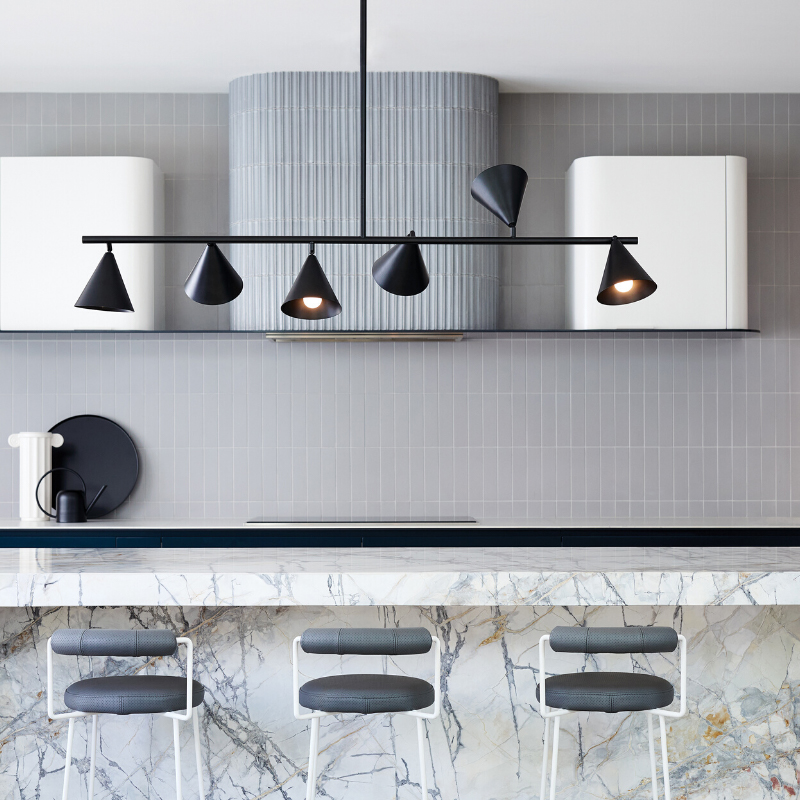The Rise of Colored Light Fixtures
In recent years, colored light fixtures have become increasingly popular in both residential and commercial spaces. While traditional white lights remain a classic choice, many people are opting for colored lights to add a unique touch and create a certain mood or atmosphere within a room or space.
One of the reasons for the rise in popularity of colored light fixtures is the availability of smart lighting systems that allow users to easily change the color and brightness of their lights via an app or voice command. This level of control over one’s lighting allows for a greater degree of personalization and customization in the home or workplace.
Colored light fixtures also open up new possibilities in terms of interior design. With a vast array of colors to choose from, designers can match the lights to existing decor or create a completely new look by using complementary or contrasting colors. Colored lighting can also be used to create focal points, highlight artwork or architectural features, or simply add a pop of color to a plain room.
The Science Behind Colored Lighting
Beyond their aesthetic appeal, colored light fixtures also have a psychological and physiological impact on those exposed to them. Colors have been shown to have a direct effect on mood, with certain colors evoking feelings of relaxation, excitement, or creativity.
For example, blue light has been shown to improve focus and concentration, making it a popular choice for offices and workspaces. Green light is often used in healthcare settings as it has a calming effect and can help reduce anxiety and stress. Meanwhile, warmer colors such as yellow, orange, and red are associated with feelings of warmth and comfort, making them ideal for creating a cozy atmosphere in a living room or bedroom.
In addition to affecting mood, colored light can also have a physical impact on the body. Research has found that exposure to certain colors of light at certain times of day can help regulate the body’s internal clock and improve sleep patterns. Blue light, for example, can disrupt sleep if used at night, while amber-tinted lights can help improve sleep quality.
Tips for Choosing and Using Colored Light Fixtures
When incorporating colored light fixtures into a space, it’s important to consider the overall design and function of the room. Here are some tips to keep in mind:
- Choose colors that complement or contrast with existing decor
- Consider the mood or atmosphere you want to create
- Use warm colors in spaces designed for relaxation and cool colors in workspaces
- Try not to rely too heavily on brightly colored lights, as they can be overwhelming and exhausting to the eyes
- Use colored lighting sparingly as accents, rather than overwhelming the entire room with one color
Ultimately, the use of colored light fixtures is a matter of personal preference and design choice. However, with the many benefits and possibilities they offer, it’s no surprise that they continue to grow in popularity amongst individuals and designers alike.
The Future of Colored Light Fixtures
As technology advances, the potential for colored light fixtures is only set to increase. With the integration of smart home systems, users will be able to use voice commands or a smartphone app to control their lighting and create custom scenes that match their mood or activity.
In addition, the use of LED technology in colored light fixtures is becoming more common, as it allows for greater energy efficiency and lifespan compared to traditional incandescent or fluorescent bulbs. This is particularly important as sustainability and energy efficiency become increasingly important in modern society.
Overall, the future of colored light fixtures is bright, with endless possibilities for personalization, design, and functionality. Whether we’re using them to create a relaxing oasis in our homes or a productive workspace at the office, colored light fixtures offer a range of benefits that will continue to be appreciated for years to come.
